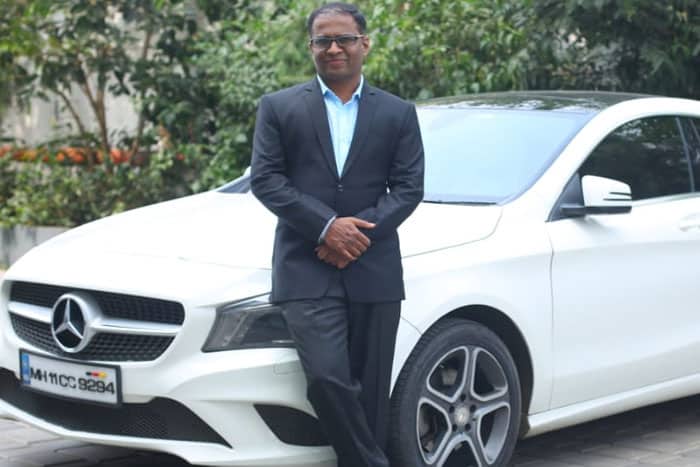In an exclusive chat with Viinod Atpadkar, CEO, SVR InfoTech, we find out about the challenges and benefits of integrating robotics and automation into India’s automotive manufacturing companies
B. Swaminathan
SVR InfoTech is a young organization of people and creative minds mentored by industry veterans. The company’s focus on research and innovation in Robotics and Automation has helped companies achieve production in time by saving on skilled talent acquisition, with human safety on priority. The company’s integration team helps optimize the manufacturing process through automation thereby increasing production.
The company’s flagship product, “Flexible Manufacturing System (FMS) or Modular Manufacturing System (MMS), gained more value due to its openness in coding, integration of different stations, and numerous experimentations on a single platform, over and above cost-effective solutions. In an exclusive chat with CMR India, Viinod Atpadkar, CEO of SVR InvoTech speaks about the auto industry in India, the challenges it faces and how SVR InfoTech is helping them. Edited excerpts.
Q1. What sort of challenges do Indian automobile companies face?
Ans. Post-pandemic, the biggest challenge that the automobile industry faces is attracting the right people at the right place; shortage of skilled talent among freshers, a fear factor of new freshers’ acquisition and retention, and high salary costs of experienced talent are some of the significant challenges. With artificial intelligence (AI) & Automation knowledge within the young generation, consumer interest in digitization, and a more personalized, connected car driving experience, the demand for advanced technologies has also increased.
Q2. How do you see the impact of robotics on auto industries?
Ans. Auto Industries always gear up to futuristic consumer trends. The only way to justify new consumer needs is through automation, which may be driven by process, manufacturing-driven, design innovation, optimization, AI, or technology change. The assembly line is now robot driven to increase accuracy and ensure defect-free manufacturing to improve efficiency. Robotic automation has increased the production rate and reduced dependency on skilled labor. In fact, by 2030, we all will see companies where only one or two managers will be handling the entire plant operations. Robotics is known to increase output and efficiency while decreasing costs.
Q3. Robotics is still advanced, and why do you think SMEs cannot afford robotics?
Ans. For small- to medium-sized enterprises (SME) manufacturing outfits, any gain in productivity can have a huge impact. Automation offers significant advantages, but many SMEs believe that robotics is out of their reach. These organizations cannot afford large, complex robots that do not fit into limited floor space, require high integration with the work environment, or adapt existing robot practices to the new costly designs. Many SMEs are not always in production, so customizing the application and manufacturing the manual process are the only options available. Complex robots require specialized personnel to program and maintain them, which is too expensive, with a payback period that is too long to justify the investment.
Q4. Which segment of the automotive sector easily adopts robotics? (like assembling or R&D or modeling or manufacturing)
Ans. Robotics can be fitted to all applications, but we need to focus mainly on repetitive work to reduce efforts, increase production on the assembly line or manufacturing machine, etc. The ROI calculation should justify the cost of engineers involved in the work, the budget involved, and the payback period.
Q5. Compare the robotics usage in the Indian auto sector versus the usage of robotics in the western region’s leading auto and component manufacturers.
Ans. Post covid we see rapid change in the adoption of newer technology for survival. India’s Industrial Robotics Market CAGR is expected to be 13% during the forecast period, and the market size is expected to reach nearly US$ 9.02 Bn. by 2027. Indian industry is rapidly moving towards automation for growing production volume, accuracy, and safety. India needs to expand its manufacturing industry to create more job opportunities. Higher wages and the increasing significant share of wealthy citizens in India are the main drivers of a growing and promising market for the consumer. The automotive market remains the largest consumer market by far, with a 4x share of total installations.
In the western region, the platform has already been seen because of the available ecosystem, but soon we will be competing with them because of favorable government conditions, clusters, and benefits to MSMEs; over & above all, the ease of doing business has become easy.













